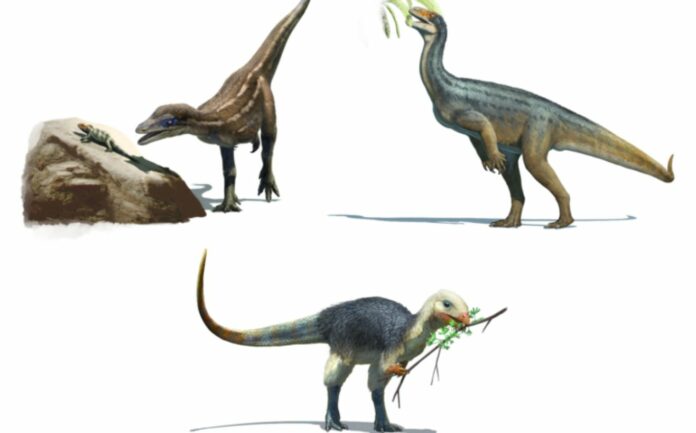A group of University of Bristol palaeobiologists found that the earliest dinosaurs included both meat-eating and plant-eating species.
By analyzing the tooth morphologies of the oldest dinosaurs and replicating their dental function using computer modeling, specialists were able to compare their diets to those of living reptiles.
Their research, which was just published in Science Advances, demonstrates that several types of plant-eating dinosaurs were historically omnivorous and that our iconic long-necked herbivores, like Diplodocus, included meat in their diets.
The fact that they were able to change their diets early on probably explains why they have been so successful in both evolution and ecology.
The earliest dinosaurs are mysterious. They were much smaller than their descendants, and for most of the Triassic, they were overshadowed by reptiles that looked like crocodiles.
Dietary and ecological diversity is unclear, but scientists believe that something must have occurred in the Triassic that enabled dinosaurs to survive the Triassic–Jurassic mass extinction and adapt thereafter, becoming the dominant group for the rest of the Mesozoic.
Dr. Antonio Ballell, the study’s lead author from the University of Bristol, remarked, “Soon after their origin, dinosaurs start to show an interesting diversity of skull and tooth shapes.”
Palaeontologists have suspected this for decades, leading them to consider the possibility that various animals were already experimenting with alternative diets.
Scientists have compared their teeth to those of modern lizards to try to figure out what they ate.
“We investigated this by applying a set of computational methods to quantify the shape and function of the teeth of early dinosaurs and compare them to living reptiles that have different diets. This included mathematically modelling their tooth shapes and simulating their mechanical responses to biting forces with engineering software.”
“With this battery of methods, we were able to numerically quantify how similar early dinosaurs were to modern animals, providing solid evidence for our inferences of diets,” adds co-author professor Mike Benton.
“Theropod dinosaurs have pointy, curved and blade-like teeth with tiny serrations, which behaved like those of modern monitor lizards. In contrast, the denticulated teeth of ornithischians and sauropodomorphs are more similar to modern omnivores and herbivores, like iguanas.”
The study is also unique because it uses machine learning models to put the earliest dinosaurs into different diet groups based on the shape and function of their teeth. For example, the teeth of the Bristol dinosaur Thecodontosaurus were well suited to eating plants.
“Our analyses reveal that ornithischians – the group that includes many plant-eating species like the horned dinosaurs, the armoured ankylosaurs and the duck-billed dinosaurs – started off as omnivores,” adds senior co-author professor Emily Rayfield.
“And another interesting finding is that the earliest sauropodomorphs, ancestors of the veggie long-necked sauropods like Diplodocus, were carnivores. This shows that herbivory was not ancestral for any of these two lineages, countering traditional hypotheses, and that the diets of early dinosaurs were quite diverse.”
In his conclusion, Dr. Ballell adds: “It seems that one of the things that made the first dinosaurs special is that they evolved different diets throughout the Triassic, and we think this might have been key for their evolutionary and ecological success.”
During the Mesozoic Era, the dinosaurs ruled the earth until their demise 66 million years ago. They featured large herbivorous groups like as the long-necked sauropods as well as carnivorous species such as Tyrannosaurus rex and its cousins.
But dinosaurs came from much more humble beginnings. The first dinosaurs appeared about 235 million years ago, during the Triassic period.
Image Credit: Gabriel Ugueto
